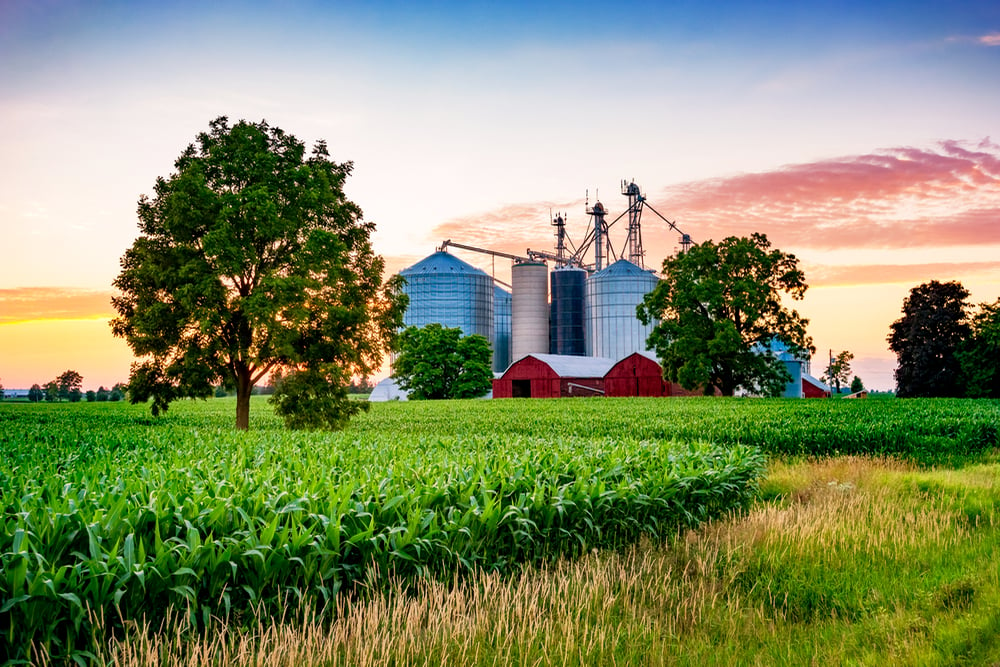The Canadian ethanol industry was full of heady promise when it splashed out of the labs in the ’90s, touted as the saviour of the environment, a breakthrough in green energy, and an enormous new market for grain farmers.
After decades of low crop prices, farmers were desperate for a shot of good news, and the barrels of government grants and incentives were just so tempting. Canadians took a cautious sip. South of the border, meanwhile, the Americans drank it up and called for another round. Although they had begun using ethanol-blended fuel as early as the 1970s, their government really got down to sloshing out incentives and mandates under the U.S. Clean Air Act of 1990.
Read Also

The wildly adaptable side of next gen agriculture
Some people just fall into the world of agriculture — and consider themselves lucky to have stumbled into such a…
By 2005, there was a flurry of construction activity in the ethanol industry. Ground was broken for dozens of new plants and plans were drawn for even more. In February 2006, the annual capacity of the U.S. ethanol sector reached 4.4 billion gallons.
Then, in July 2008, oil soared to its all-time high at over US$140 a barrel, contributing to a boom in commodity prices. It looked like the party would never end.
But it did. Now it looks like ethanol is as volatile as the rest of the market. In fact, it may widen our volatility, not reduce it. If there’s good news for grain farmers, then, it’s that our price spikes go higher, and we need to be at the trigger, ready to pull when they do.
When the recession struck, the price of ethanol plummeted with gasoline. Demand slowed and credit tightened. At the same time, all those newly built ethanol plants shorted the corn supply in the Midwest, propping the corn price too high to economically convert the grain into fuel.
Since then a dozen of the 200 ethanol plants in the U.S. have plunged into bankruptcy. Others are suffering the hangover hurt.
Evading bankruptcy
Although no plants in Canada went bankrupt, building and expansion slowed. Our government programs were less aggressive than the U.S., so many of the plants in this country were still in the startup or planning stages.
Today 16 ethanol plants are producing 1.7 billion litres of ethanol annually in Canada. This is just short of the estimated two billion litres required to meet the federal five per cent inclusion rate.
With one bushel of grain producing roughly 10 litres of ethanol (plus valuable co-products such as about 17 pounds of high-protein animal feed) this means we have roughly 200 million bushels of grain feeding into these plants.
That’s paltry compared to south of the border. U.S. ethanol manufacturers were on track to buy 4.7 billion bushels of corn in 2010 — more than a third of the country’s corn crop. They were also producing 12 billion gallons (45 billion litres) of ethanol, more than enough to meet mandated requirements, and also more than enough to saturate the distillers grain market at current dietary inclusion levels.
According to analysis by Meyers Norris Penny (MNP) in Saskatoon, the U.S. ethanol industry has gone through multiple stages since its inception in the ’70s, each time improving engineering knowledge, scale and energy efficiency and yields.
Despite those improvements, the ethanol revenue stream is still based on commodity prices, and it is still very susceptible to volatility. And that means more than the corn market. It means oil too. Ultimately, says the MNP report, public acceptance of the biofuel industry, and its profitability, depends on a higher price for gasoline.
“The higher the oil price, the more profitable ethanol becomes,” says Alfons Weersink, professor of economics at the University of Guelph. “…higher ethanol prices cause corn prices to be bid up.”
This connection will help crop farmers cover increased input costs from price spikes in oil. In the past, farmers had to absorb those higher fuel and fertilizer costs. “Now their output prices will rise, as will input prices, with the cost of energy,” says Weersink.
A maze of subsidies
The ethanol industry relies on government regulations, tariffs and tax incentives. Lobby groups abound. The Canadian Renewable Fuels Association, an industry lobby group, claims ethanol contributes $2 billion to the economy annually and that ethanol plants employ 1,000 people, many in rural areas.
Financial support has spanned three administrations, with both Conservative and Liberal governments instituting substantial subsidy programs. As of mid-2002, five plants producing fuel ethanol were operating in Canada: one each in Alberta, Saskatchewan and Manitoba and two in Ontario, with a total production capacity of about 175 million litres of fuel ethanol per year.
In 2003, the federal Ethanol Expansion Program started providing grants for new plants, with a total of $116 million allocated for plant construction. Plus, the provinces have their own incentives, such as capital funding and incentives sometimes blended into pricing, says Gordon Quaiattini, president, Canadian Renewable Fuels Association.
Quaiattini estimates government support at 15 to 17 cents per litre. That’s much lower than claimed by opponents like the International Institute for Sustainable Development, which estimates subsidies at 70 cents per litre. It says total government 2010 support for ethanol in Canada is as high as $458 million.
Government support goes beyond subsidies and incentives and can be difficult to calculate in dollar terms. One of the drivers for the ethanol industry’s growth over time is the mandated use of ethanol in transportation fuels, now at five per cent. In fact, the Canadian government in its Climate Change Action Plan has a goal of 35 per cent of Canadian gasoline being blended with 10 per cent ethanol.
Food versus fuel
When grain supplies tightened in 2008 due to ethanol and world grain prices rose, questions arose about whether ethanol from grain was a good idea.
So last summer, when the devastating drought in Russia lit a fire under world wheat prices, the food-versus-fuel discussion made headlines again. What didn’t seem to make the newspaper was that even in a difficult season, farmers are producing massive crops.
Quaiattini says the reality is that the world’s farmers produce more than enough food. It’s the distribution system, coupled with a lack of agronomic capacity of underdeveloped countries that is the problem. From 1996 to 2005, U.S. corn yields averaged 138 bushels per acre, up 23 bushels per acre over the previous decade.
Despite their productivity, Canadian and U.S. farmers have needed government support. “Consecutive governments for the last 20 years have had to give income support to Canadian farmers,” Quaiattini says. “It’s become standard operating procedure.”
Quaiattini says ethanol has given farmers a new, sustainable market for their crops, particularly affecting regional demand around the plants, and that it has done so without significantly increasing food costs for consumers. The 2008 climb in grocery prices, he says, was caused less by grain prices than by the impact of high oil prices on manufacturing.
At the 2008 peak (in wheat and corn prices), ethanol was still 25 to 45 cents a litre cheaper than oil, says Quaiattini. Prior to 2008, gas companies in the U.S. were blending ethanol beyond the mandated levels because it had a price advantage.
How long can it last?
Scientists have known for decades that using grain to produce ethanol is a transitional technology. Other technologies, including cellulosic ethanol will eventually prove much more efficient, even if they aren’t commercially viable today.
POET’s plant at Emmetsburg, Iowa will be among the world’s largest cellulosic plants when it opens its doors this year, producing 25 million gallons of ethanol a year from corncobs and high-cut material.
In Canada, Finance Minister Jim Flaherty has pledged $500 million to underwrite construction of commercial ethanol plants using agricultural or forestry waste to make transportation fuel. The budget identified Iogen Corp. as a leading candidate.
But there’s hardly a stampede. Deep-pocketed private-sector partners have turned more risk averse in the recession, and some government climate-change policies have been delayed or watered down.
In general, cellulosic ethanol has always been the ethanol industry’s dangling carrot. “For years the industry has been talking about second-generation biofuels, and how much cheaper and cleaner cellulosic ethanol will be,” says Alex Dejong, a market analyst with DePutter Publishing and a part-time graduate student studying ethanol at the University of Guelph. “The potential is there, but to me there’s a long way to go before second-generation biofuels are commercially viable.”
Last summer, the U.S. Environmental Protection Agency announced it had cut its cellulosic biofuel mandate for 2010 from 100 million gallons to just 6.5 million gallons.
Now, however, large oil companies have invested in the grain ethanol industry, scavenging the remains of several victims of the recession and the corn price spike calamity. Sunoco paid $8.5 million for the Northeast Biofuels plant in upstate New York that originally cost $200 million to build. VeraSun Energy Corp., which went bankrupt, sold seven ethanol plants for $477 million to Valero in April. They were the second-largest ethanol producer in the U.S.
In Canada, Suncor and Husky have been involved in several plants for many years. Ethanol blending started in Manitoba in 1981 by Husky.
The cellulosic market may be developing more slowly than some experts had predicted, Quaiattini agrees. In the long run, however, that may turn out to be a good thing, he says. You can bet that in the boardrooms of the world’s petroleum giants, they’re going to school on the successes and failures of ethanol’s first phase.CG














